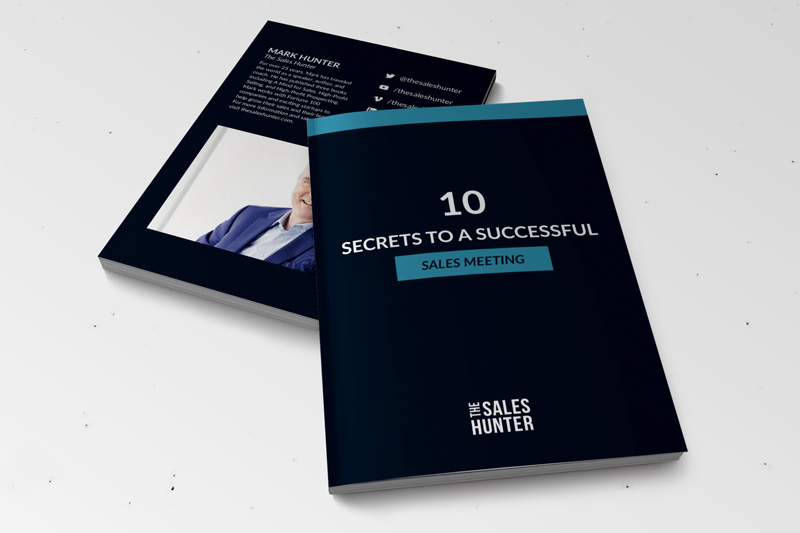Guest post Monday is here! Today we have Ron Karr giving us nuggets of gold with regard to return on investment (ROI). Ron is a business transformation expert and author of Lead, Sell or Get Out of the Way.
The key to selling in this tough economy is the ability to create the appropriate ROI that will motivate a customer to say yes to your proposal. When times are tough, a higher ROI is expected and demanded by your customers. With tighter budgets, customers are demanding more in return for their investments. Many sales people fall short by not providing an ROI that is not strong enough to convert a customer’s “no” into a “yes.”
What “No” Really Means
When a customer says “no,” they are not saying there is no way they are going to buy from you. What they are communicating is the fact that they are not ready to give you the answer of risk – “yes.”
When people feel it is too risky to move forward and/or that the ROI is not sufficient to warrant the requested action, they are going to go with the answer of no risk – “no.”
Buyers measure return on investment in three ways:
1. Quantitative – This is the method we are all accustomed to. Black and white facts on how someone is going to benefit from your product or service. It is dollars saved at time of purchase, dollars saved over lifetime use of your service, increased market share, increased revenues, etc. Anything that can be quantified as a benefit arising from the use of your product.
2. Qualitative – This is more of a subjective measurement. It is more experiential. Customer experiences, level of aggravation, impact on image, etc. Items that are not easily quantified, but are areas that do affect the bottom line.
3. Emotional – Some people can be persuaded on issues such as personal pride, legacy, need to be the best, etc. Some buyers will do anything to win at all costs. They are emotionally tied to the end result.
The Magic is in The Mix
All sales start with the heart. The buyer is emotionally impelled to look for a solution to some issue; the need to avoid pain, gain pleasure, etc. Most often the conversation then moves to the brain where the logical process takes over to arrive at the “right” decision.
Not every customer buys for the same reason. Each customer relies on a mix of the above three areas of measurement to determine whether or not they will get an appropriate return on their investment. Your job is to inquire through questions the areas valued by your customers and the impact they have on the final decision making process. When there is one decision maker, you need to identify that person’s mix. When there is a group of decision makers, you have to play to each of the player’s personal mix as well as to the group mix.
Creating the Proper ROI
The perceived value proposition you need to address is addressed in this formula:
CNC-CC = PV
PV = Perceived Value
CC = Cost of Change
CNC = Cost of No Change
CNC is defined as not accepting your proposal. The customer is not motivated to say yes and they will continue with their current issues or lack of results by not accepting your proposal. CC is defined as the cost of change. Every buy decision has a degree of pain associated with the purchase. Switching long time vendors to a new player is painful. Paying a higher price than expected means the customer has to change their perceived value of the purchase.
Buying a new process or product never used before entails people changing the way they operate and going through the pain of learning something new. People are only going to say yes to you if they feel your value proposition justifies the request. That means, for PV to be a positive return, CC must be lower than CNC.
Where most salespeople make their mistake is they feel that any positive measurement is good enough to justify the purchase. In a down economy, that is not the case. People demand multiple returns on their investment.
To illustrate, let’s take the purchase of my new book Lead, Sell or Get Out of the Way. For a retail price of $24.95, you can get a great tool guaranteed to double, triple or quadruple your sales. Now, let’s say you average sale is $30. My promise is if you buy my book, you will increase your sales by at least $30. Is that extra deal enough to justify your investment? Let’s see.
CNC (loss of $30 sale) minus cost of change (purchase price $24.95) = perceived value of $5.05. By the formula this is a positive return. But is it really enough to justify your time in making the purchase by logging on to Amazon.com or driving in a car to a Barnes and Noble or Borders? Not when you add the effort required to make the purchase.
Now, let’s say you want to increase your sales by $30,000 in 2010. At $30 a sale, you need to close an extra thousand deals. Let’s say I tell you that my book will help you generate at least 10% of that goal. Your new value proposition is:
CNC ($300) – CC ($24.95) = PV $275.05. Is this enough to warrant this investment? Maybe! If you add the qualitative measure of how achieving this goal will make your manager happy and possibly lead to a promotion, I have definitely increased my chances of having you go through the effort of purchasing the book. And if I can relate to you emotionally how the book will help you rise to the top and become a member of the exclusive President’s Club, I have now elevated the value proposition further.
The good news is the book Lead, Sell or Get Out of the Way will enable you to accomplish all of this.
The question you need to ask yourself is how well do you qualify your customers in the three areas of measurement they are going to use to justify their purchase decision. A bigger question is have you uncovered enough reasons to create a value proposition that produces multiple returns on investment and is strong enough to push your customers over the fence and say yes to you.
Your ability to do this is critical to your success in an economy where there are fewer deals and less money to spend on purchases.
Don’t Get Mad
In a tough economy, customers are going to continually question your value proposition and threaten to bring in lower priced goods and services. Don’t get mad. They are just doing their job. Every day they are forced to produce better results more efficiently and save money.
Your competition, especially if they cannot beat you on innovation, will sell on the one thing anybody can do, which is lower their prices. Do not get sucked into this zero sum game. Continuously keep communicating the value proposition.
But remember the value you offer today will never be good enough. Successful companies today are continuously searching for ways to enhance their value proposition. Times demand this. Customers expect this. Your competition forces you to do this.
As for continuously having to explain your value to your customers, get used to this. It is a belief system and a way of life you need to operate from. Otherwise you will be continuously discounting your prices making it hard for you to compete and survive. Does this mean you will never have to discount? No! But it does represent the difference of not leaving so much money on the table.
What would it mean to your success if you were able to increase your revenues by 10%? There are two ways to do this. Increase the number of deals and the size of the deals. By working on both of these areas, you will find it easier to succeed. This means you need to learn how to sell on value and you must be committed to doing this each and every day.
Want to receive some of Ron’s book free? You can download the first three chapters of “Lead, Sell or Get Out of the Way” at this link: http://www.ronkarr.com/leadsellbook.











